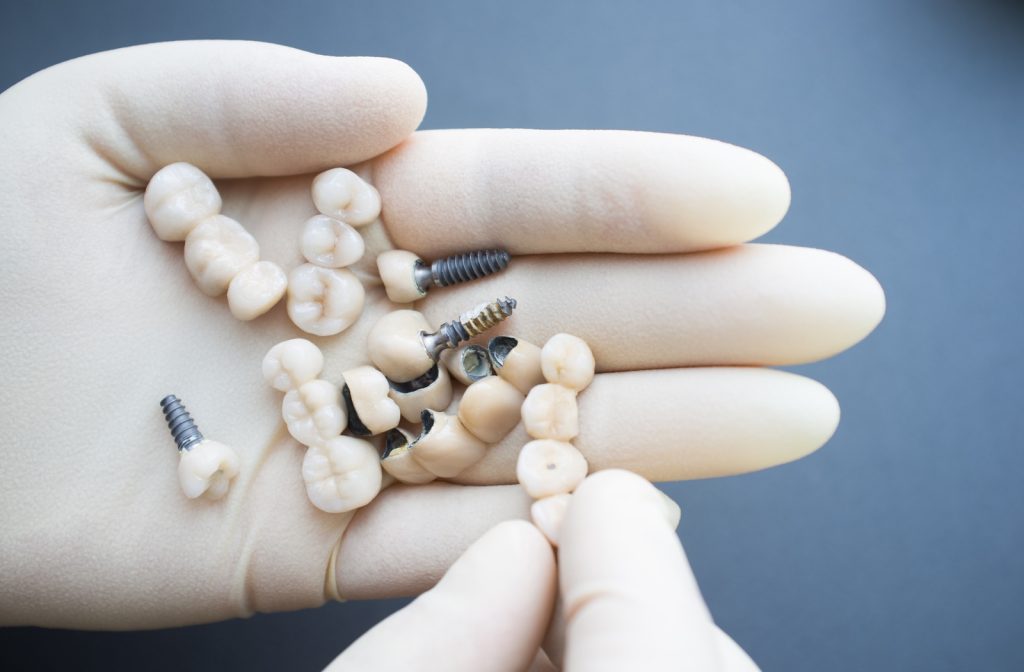When we experience issues with our teeth, dental crowns, and bridges are usually the go-to for repair. While both offer similar therapeutic effects, there are critical discrepancies in utility between the two that make correctly choosing the appropriate one essential. To avoid any problems and be sure you’re getting the best solution for your specific need, it’s necessary to have a thorough understanding of each type of restoration and visit a reputable dental hospital like Allure Dental. Allure Dental makes crowns and bridges utilizing cutting-edge technology and superior materials to ensure you receive long-lasting, attractive results for all your oral care requirements.
Contents
What are dental crowns?
A dental crown is an effective way to reconstruct a damaged or decaying tooth, enhancing its shape, size, strength, and aesthetic. The crown is formed from porcelain, ceramic, or metallic alloys, which can cover a broken tooth, or one that has gone through root canal treatment or possesses a substantial filling. Utilizing this method of care ensures excellent results in restoring the original condition of your smile!
Dental crowns are an essential remedy for restoring weakened teeth’ strength and overall aesthetics. They safeguard a damaged tooth from further harm and hold dental bridges securely in place, cover dental implants, and camouflage discolorations or imperfections of the tooth surface. Applying this proactive measure provides optimal protection and grants individuals a lasting solution that revives a beautiful smile.
What are dental bridges?
Dental bridges are utilized to bridge the gap created by one or more missing teeth, allowing for an aesthetically pleasing and functional restoration. Composed of porcelain, ceramic, or metal alloys, these prosthetic devices feature two dental crowns secured over adjacent teeth and a pontic. This custom-made false tooth occupies the space left. With a realistic look and feel explicitly tailored to its user’s needs, a dental bridge is undoubtedly an undeniably intelligent way to fill a gap in your patient’s smile.
How do dental crowns and bridges differ?
- Dental crowns are used to cover a tooth that has been damaged or decayed, while dental bridges are used to replace missing teeth by joining an artificial tooth permanently to adjacent natural teeth.
- Crowns are available and crafted from various materials, such as porcelain fused to metal, all ceramic, or all metal. The most commonly used option for bridges is a porcelain set on a metal foundation, though other materials are also available. This ensures your smile looks natural and beautiful!
- An altogether dissimilarity is that dental crowns are placed and set in stone on already residing teeth through a binding substance, leaving the other teeth intact and unmolested during placement. But when affixing a bridge, nearby teeth must be adjusted and fashioned accordingly to ensure that the bridge can be securely fitted and situated.
- Dental crowns typically last about 5-15 years before needing replacement, whereas bridges tend to have an even longer lifespan of up to 15-20 years with proper care and maintenance.
Benefits of dental crowns and ridges.
Dental crowns and bridges are immensely beneficial for patients who require oral reconstruction. Not only do they bring much-needed relief from discomfort, but they also boast a plethora of additional benefits. Here’s why these restorative treatments serve as such an advantageous option:
- Durability: Crowns and ridges form a protective shield over the teeth, increasing their strength and durability. They are made from strong materials such as porcelain, metal alloys, or composite resin that can last up to 15 years or more with proper maintenance.
- Protect and strengthen damaged or decayed teeth: Dental crowns and ridges can cover and protect a tooth that is severely decayed or damaged, preventing further damage and restoring the tooth’s function.
- Beauty: Crowns and ridges can be customized to match your natural tooth color, giving you a beautiful smile that looks natural and aesthetically pleasing.
- Comfort: Properly fitted crowns provide improved comfort while eating since they restore teeth to their original shape and size, enhancing bite functionality.
- Crowns and ridges offer an enduring solution to the woes brought on by malfunctioning or fractured teeth. Typically crafted from porcelain or metal, these prostheses can be custom-made to blend with the hue of your natural teeth. As a shield to safeguard them from future injury, crowns and ridges are engineered to withstand wear and tear, often up to a decade. Nonetheless, following that period, one might need to have them swapped out if there have been further deteriorations to the tooth structure underneath.
Crowns and bridges are greatly used in refurbishing teeth and serve specific applications. Crowns perform the role of safeguarding and bolting up weakened or rotten teeth, whereas bridges take the place of a missing tooth. Both treatments boast their own merits, therefore dental practitioners must be consulted to decide which option best caters to the patient’s requirements. When managed with the utmost care and upkeep, crowns and bridges can offer enduring remedies.

